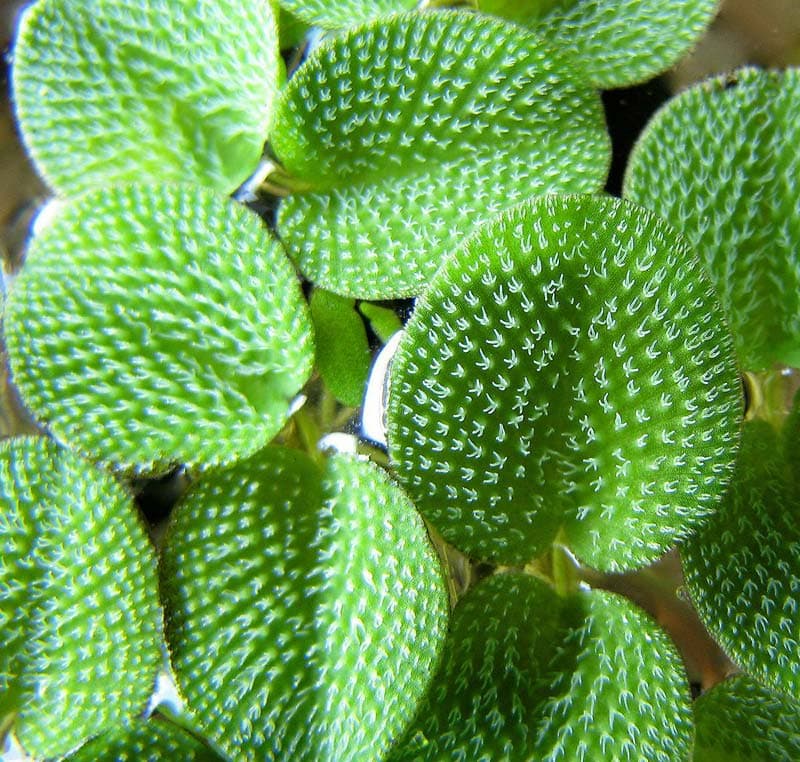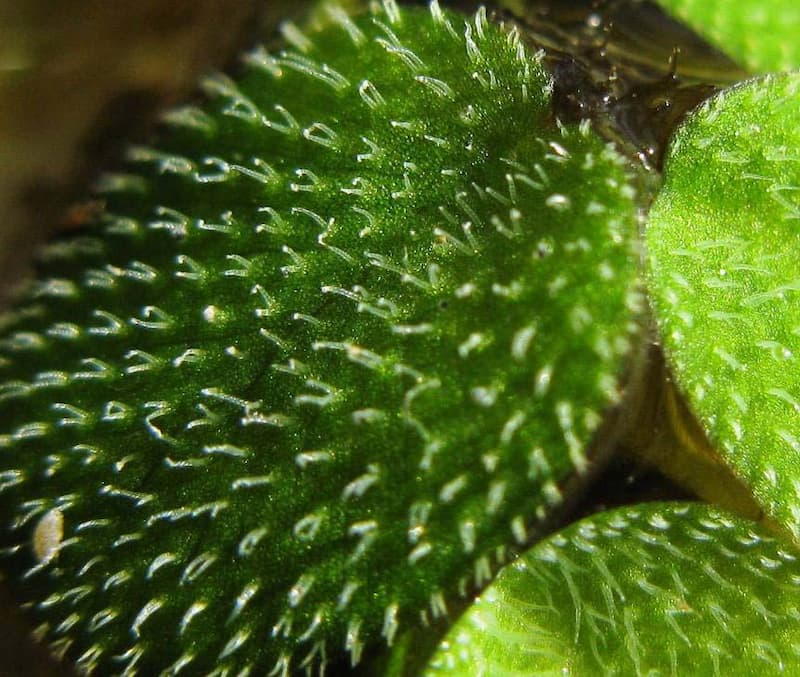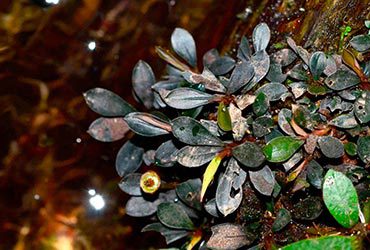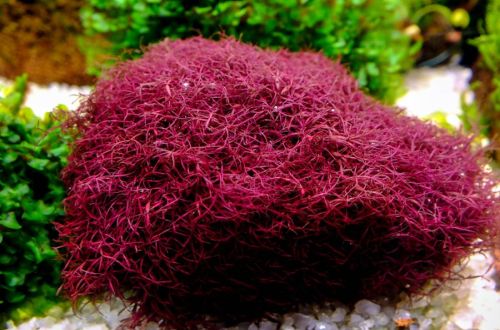
Salvinia small
Salvinia small, scientific name Salvinia minima. This plant is native to the tropical regions of South and Central America. In the wild, it grows in warm stagnant bodies of water well lit by the sun, such as swamps and backwaters of rivers. It occurs in coastal brackish waters, where rivers flow into the sea.

It is now widely distributed in the tropical region of North America, in particular in the United States. Considered an invasive species that damages native flora.
The plant forms a short stem 10-15 cm long. When the stem grows longer, it is divided into two parts, thus a new plant appears. Three leaves grow on the nodes of the stem – two leaves float on the surface, one leaf is under water. The underwater leaf is not like the others. It has changed into a kind of root system. Salvinia are ferns and have no ordinary roots, like higher plants.

Floating leaves are round or oval. The size of the leaf blade is about 1-1,5 cm. Numerous hairs are located on the outer surface of the leaves, collected in a bundle of 4 hairs. The leaf blade is green. However, light hairs give a light green tint.
In favorable conditions, it grows quickly. Every 7-10 days the number of plants can double. In smaller aquariums, it is important to thin out the Salvinia regularly, otherwise it will cover the entire surface of the water, resulting in shading of the aquarium.

Salvinia is small, unpretentious, easy to care for. Optimal growth conditions are warm, nutrient-rich water and bright light. If fish live in an aquarium, then nutrients will be formed naturally. In this case, there is no need to feed the plant.
Not recommended for aquariums with strong currents. In this case, the plant will hit the walls of the tank and eventually collapse.
Basic information:
- Difficulty of growing – simple
- Growth rates are high
- Temperature — 18-32°С
- Value pH — 4.0–8.0
- Water hardness – 2-21°GH
- Light level – moderate or high
- Aquarium Use – Surface Floating
- Suitability for a small aquarium – yes
- spawning plant – no
- Able to grow on snags, stones – no
- Able to grow among herbivorous fish – no
- Suitable for paludariums – no
Scientific Data Source Catalog of Life





